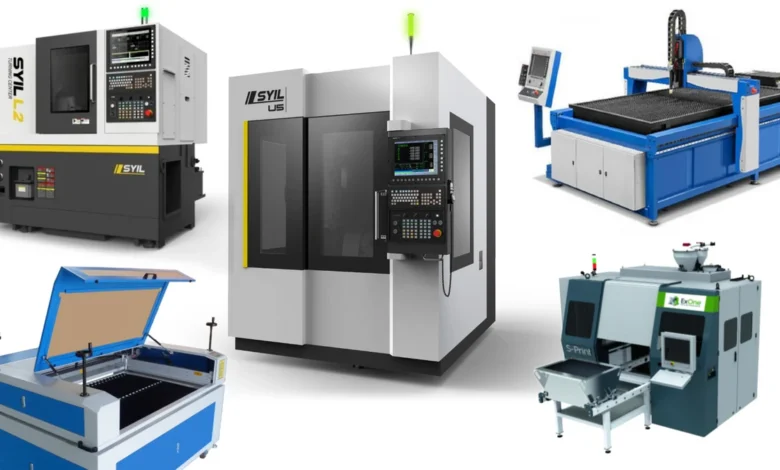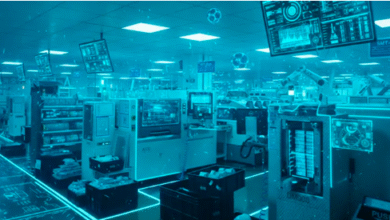Types of CNC Machines: Which One to Choose?

CNC machines, or Computer Numerical Control machines, use computer programs to control cutting, drilling, or shaping materials such as metal, wood, or plastic. They’re a big deal in manufacturing, woodworking, and even hobby projects because they’re precise and fast. With so many types out there, picking the right one can feel overwhelming. This article breaks down the main types of CNC machines, their uses, and how to choose one for your needs. If you’re looking for trusted suppliers, you can learn more about top manufacturers.
CNC machines have been around since the 1940s, but modern ones are way more advanced, thanks to better software and hardware. They range from small desktop models for hobbyists to huge industrial setups for factories. Each type has specific strengths, so knowing what they do helps you match the machine to your project.
CNC Milling Machines
CNC milling machines are some of the most common. They use rotating tools to cut material from a workpiece that remains fixed on a table. These machines can cut slots, holes, and other shapes in materials such as steel, aluminum, and plastic.
Mills come in different setups, like 3-axis, 4-axis, or 5-axis. A 3-axis mill moves in three directions: left-right, forward-back, and up-down. This works for simpler parts, such as brackets or panels. A 5-axis mill adds two more rotation angles, letting it handle complex shapes like turbine blades or car parts.
They’re popular in industries like automotive and aerospace because they’re versatile. You can swap tools to drill, cut, or engrave. Mills handles both small prototypes and large production runs. For example, a shop might use a 3-axis mill to make metal gears or a 5-axis one for intricate medical implants.
Choose a milling machine if you need to work with metals or need high precision for detailed parts. They’re pricier than some other types, with costs starting at $10,000 for basic models and rising to $100,000 for advanced models.
CNC Lathes
CNC lathes are built for turning materials. The workpiece spins while a fixed tool cuts it, creating round shapes like shafts, bolts, or pipes. They’re great for cylindrical parts and work well with metals, plastics, or wood.
Unlike mills, lathes usually have two axes: one for the spinning workpiece and one for the tool’s movement. Some advanced lathes have extra features like live tooling, which lets them mill or drill while the piece spins.
Lathes are common in manufacturing for parts like screws or engine components. They’re faster than mills for round shapes, often finishing parts in minutes. For example, a factory might use a lathe to produce steel rods for machinery.
Pick a lathe if your work focuses on cylindrical or symmetrical parts. They’re more affordable than mills, with entry-level models starting around $5,000. Industrial lathes can cost $50,000 or more.
CNC Routers
CNC routers are similar to mills but designed for softer materials like wood, composites, or soft metals like aluminum. They use a spinning tool to cut shapes, often for signs, furniture, or decorative panels.
Routers typically have a large worktable and operate in 3-axis or 4-axis setups. They’re faster than mills for cutting large sheets because they’re built for lighter materials. For instance, a woodshop might use a router to carve intricate patterns on cabinet doors.
They’re popular with hobbyists and small businesses due to their lower cost, starting at $2,000 for desktop models. Industrial routers can go up to $50,000. They’re less precise than mills for hard metals, but excel in woodworking or plastic fabrication.
Choose a router if you’re working with wood, foam, or other lightweight materials and need to cut large pieces or engrave.
CNC Plasma Cutters
CNC plasma cutters use a high-powered plasma torch to cut through metals such as steel and aluminum. The torch creates an electric arc that melts the material, and gas blows away the molten metal.
These machines are ideal for cutting flat metal sheets into shapes, like for car frames or industrial panels. They work fast, cutting through thick steel in seconds. Most plasma cutters use a 2D cutting path, but some advanced models handle 3D shapes.
They’re common in metal fabrication shops and construction. For example, a shop might cut steel plates for shipbuilding. Plasma cutters are less precise than mills but much faster for rough cuts.
Costs start around $3,000 for small units and can reach $30,000 for industrial ones. Choose a plasma cutter if you need to cut metal sheets quickly and don’t need super fine details.
CNC Laser Cutters
CNC laser cutters use a focused laser beam to cut or engrave materials like metal, wood, acrylic, or fabric. They’re extremely precise, with cuts as fine as 0.1 mm, making them great for detailed work like jewelry or signage.
Lasers come in different types, like CO2 for non-metals or fiber lasers for metals. They can cut, engrave, or mark surfaces, depending on the power setting. For instance, a laser cutter might engrave a logo on a metal tool or cut acrylic for a display.
They’re used in industries like electronics, art, and manufacturing. Desktop models for hobbyists start at $1,000, while industrial fiber lasers can cost $100,000 or more.
Pick a laser cutter if you need high precision for thin materials or want to do both cutting and engraving. They’re not ideal for very thick metals, where plasma cutters do better.
CNC EDM Machines
CNC Electrical Discharge Machines (EDMs) use electrical sparks to erode material, typically hard metals such as titanium or steel. They’re perfect for cutting complex shapes or tiny details that other machines can’t handle.
There are two main types: wire EDM, which uses a thin wire to cut, and sinker EDM, which uses a shaped electrode. Wire EDM is ideal for molds and dies, while sinker EDM is ideal for creating cavities for tools.
EDM is common in aerospace and toolmaking because it cuts hard materials without physical force. For example, it’s used to make precise holes in turbine blades. These machines are expensive, often priced at $50,000 or more.
Choose an EDM if you’re working with tough metals and need intricate cuts. They’re slower than other machines but unbeatable for precision.
How to Choose the Right CNC Machine
Picking the right CNC machine depends on your project. First, consider the material. Mills and EDMs are best for hard metals, while routers and lasers work for wood or plastics. Plasma cutters are ideal for metal sheets.
Next, think about precision. Lasers and EDMs offer the finest cuts, while plasma cutters are less exact. For complex 3D shapes, a 5-axis mill is your best bet.
Budget matters too. Desktop routers or lasers are affordable for small shops, starting at $1,000-$5,000. Industrial mills or EDMs cost tens of thousands, making them better suited for large operations.
Production volume is another factor. Lathes and mills handle high volumes well, while routers and lasers suit smaller batches or custom work.
Finally, check software compatibility. Most CNC machines use G-code, but some require specialized software, such as CAM. Make sure your team can handle the programming.
In summary, CNC machines come in many types, each suited to specific tasks. Mills and lathes are great for metalwork, routers for woodwork, plasma and laser cutters for cutting, and EDM for precision work. Think about your material, precision needs, budget, and production scale to pick the right one. With the right machine, you’ll save time and get better results, whether you’re in a factory or a garage workshop.



